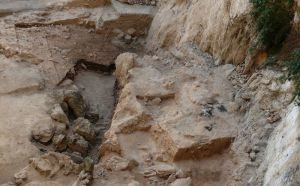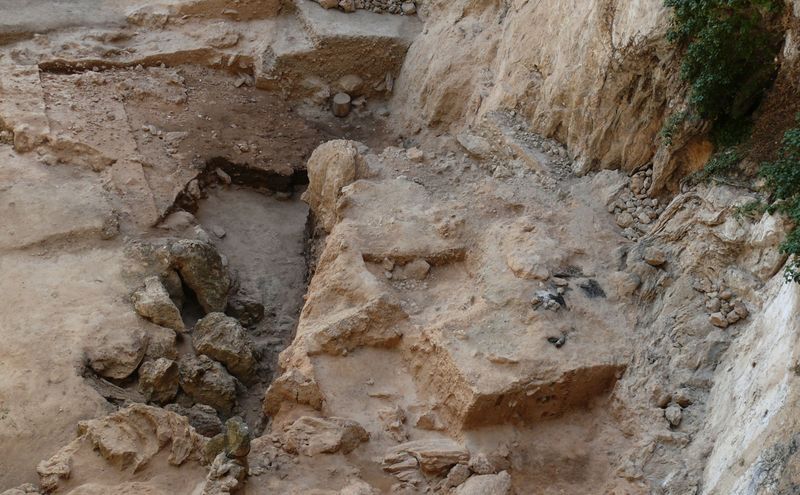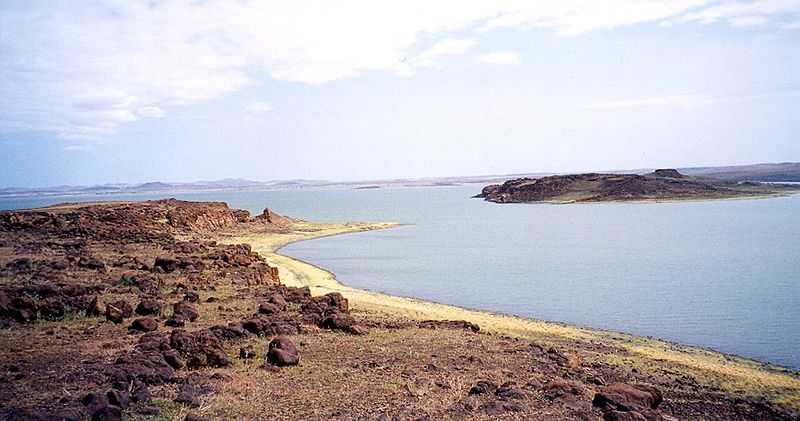
Researchers continue to make progress in their efforts to understand an essential aspect of prehistoric lifeways and a major contributing factor in the dynamics of human evolution — the human diet. In two studies, one focusing on an archaeological site in Spain, the other in the Turkana Basin in Africa, scientists are suggesting that early humans had a more diverse diet than traditionally thought.
In the first study, published June 25 in the open access journal PLOS ONE, Ainara Sistiaga from the Massachusetts Institute of Technology and University of La Laguna and colleagues examine human fecal matter (poop) detected in sediment samples taken from different occupational floor levels at the site of El Salt in Spain, a site known to have been inhabited by Neanderthals 50,000 years ago. The fecal matter indicated, based on the analysis of fecal biomarkers, that these Neanderthals predominantly consumed meat, consistent with the widely accepted dietary model for Neanderthals, but that they also consumed plant foods. One of the fecal biomarkers was formed by the bacterial reduction of cholesterol in the gut (coprostanol), an indicator of meat consumption, but the other showed the presence of a compound found in plant sources, evidence of significant plant intake.
“Taken together, these data suggest that the Neanderthals from El Salt consumed both meat and vegetables, in agreement with recent hypotheses based on indirect evidence,” conclude Sistiaga and colleagues in the study. “Future studies in Middle Palaeolithic sites using the fecal biomarker approach will help clarify the nature, role and proportion of the plant component in the Neanderthal diet, and allow us to assess whether our results reflect occasional consumption or can be representative of their staple diet.”*
_______________________________________
 View of El Salt archeological site. Credit: Ainara Sistiaga
View of El Salt archeological site. Credit: Ainara Sistiaga
_______________________________
In another study, to be published soon in the Journal of Human Evolution, scientists have found that aquatic fauna (fish and other water-based animals) may have been a highly nutritious source of food for early Pleistocene humans living in the Turkana Basin of East Africa almost 2 million years ago. In this case, Will Archer of the Max Planck Institute for Evolutionary Anthropology and colleagues employed multiple datasets to examine aquatic resource use in the early Pleistocene by focusing on four components of aquatic faunal assemblages: taxonomic diversity; skeletal element proportions; bone fragmentation; and bone surface modification from tool use. These components were used to identify associations between early Pleistocene aquatic remains and hominin behavior at the site of FwJj20 in the Koobi Fora Formation of the Turkana Basin in Kenya. The researchers focused on two dominant aquatic species: catfish and turtles.
Based on their findings, the researchers suggest that aquatic food sources provided hominins (early humans) with a significant alternative or supplement to other, terrestrial food sources. They also suggest that aquatic food sources provided some important advantages, such as “(1) a probable reduction in required investment of energy relative to economic return in the form of nutritionally dense food items, (2) a decrease in the technological costs of resource acquisition, and (3) a reduced level of inter-specific competition associated with carcass access and an associated reduction of predation risk relative to terrestrial sources of food.”**
The Turkana Basin, which includes Lake Turkana and the Koobi Fora (ridge) Formation, is well known in human evolution studies as one of the richest and most important sources of hominin fossils shedding light on the evolution of man over the past 4.2 million years.
_____________________________________________
 Lake Turkana in the Turkana Basin. Near the ancient shores of this lake, some of the most important early human finds were discovered. Doron, Wikimedia Commons
Lake Turkana in the Turkana Basin. Near the ancient shores of this lake, some of the most important early human finds were discovered. Doron, Wikimedia Commons
___________________________________________
*Sistiaga A, Mallol C, Galvan B, Summons RE (2014) The Neanderthal Meal: A New Perspective Using Faecal Biomarkers. PLOS ONE 9(6): e101045. doi:10.1371/journal.pone.0101045 http://dx.plos.org/10.1371/journal.pone.0101045
** Will Archera, David R. Braunb, Jack W.K. Harrisc, Jack T. McCoyd, Brian G. Richmond, Early Pleistocene aquatic resource use in the Turkana Basin http://www.sciencedirect.com/science/article/pii/S004724841400056
Cover Photo, Top Left: View of El Salt archeological site. Credit: Ainara Sistiaga
_____________________________________________
Read about the most fascinating discoveries with a premium subscription to Popular Archaeology Magazine. Find out what Popular Archaeology Magazine is all about. AND MORE:
On the go? Purchase the mobile version of the current issue of Popular Archaeology Magazine here for only $2.99.
Popular Archaeology’s annual Discovery Edition eBook is a selection of the best stories published in Popular Archaeology Magazine in past issues, with an emphasis on some of the most significant, groundbreaking, or fascinating discoveries in the fields of archaeology and paleoanthropology and related fields. At least some of the articles have been updated or revised specifically for the Discovery edition. We can confidently say that there is no other single issue of an archaeology-related magazine, paper print or online, that contains as much major feature article content as this one. The latest issue, volume 2, has just been released. Go to the Discovery edition page for more information.





